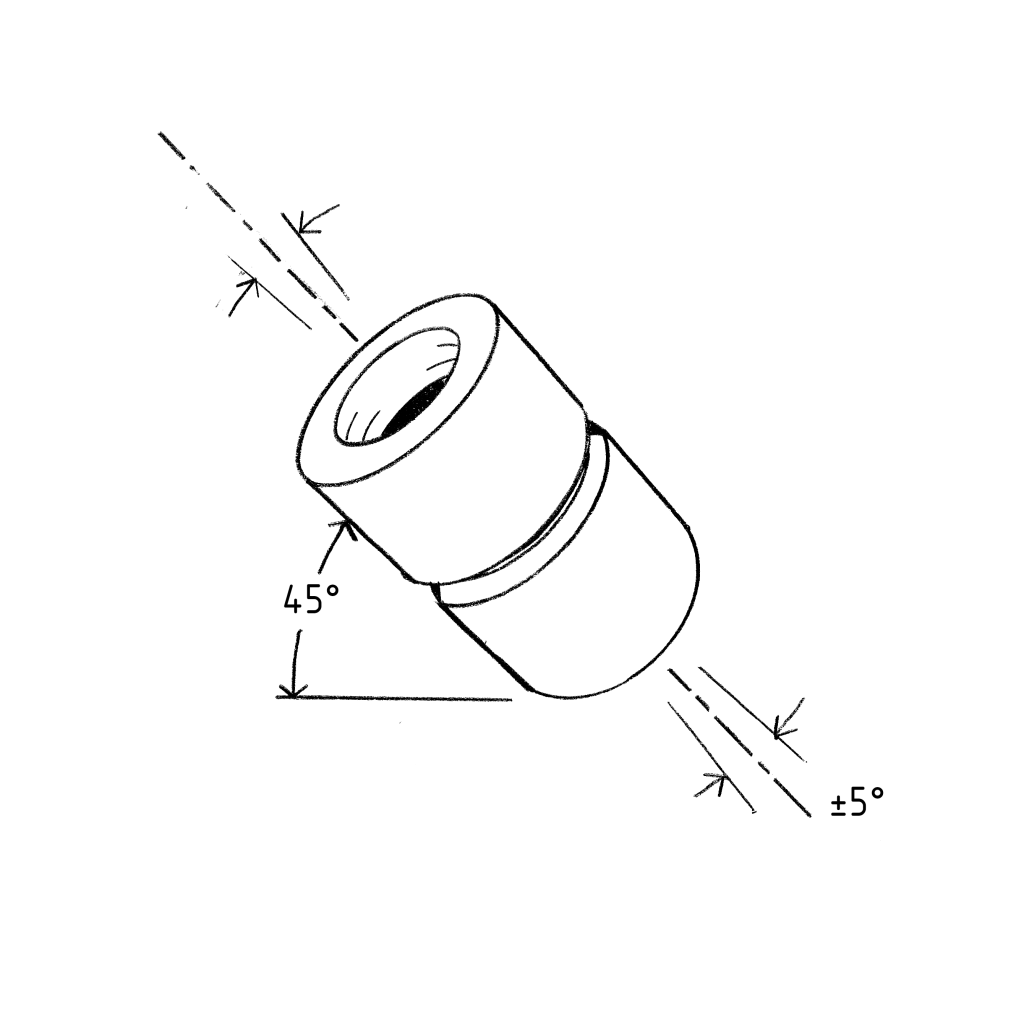15 6G Fixed Position (Multiple)
For the 6G position, the pipe is positioned at a 45º angle +/-5º and the work angles are the same as those used for the 2G position: 90º with a 5º to 10º drag travel angle.
On 6G position welds with GMAW-P, the direction of welding is downhill with drag travel. Stringer beads are used to deposit the intermediate and cover layers. The electrode angles and steady drag technique are the same as the 2G position.
On 6G position welds with FCAW-G, welding progression is always uphill with push travel. Stringer beads are typically used for wall-thicknesses up to and including schedule 80.
The 5G and 6G positions are the most challenging to weld because they involve multiple welding positions. Joints in the 5G and 6G position can also be welded uphill or downhill depending on wall thickness and the type of base metal. The welding procedure specification (WPS) will indicate the direction of travel.
Uphill Travel
- Start the arc on the tack weld closest to the 6 o’clock position.
- The keyhole is formed at the leading edge of the tack weld, and welding should progress up the joint in the overhead position.
- Switch to push travel angle as the welding position changes from overhead to vertical.
- The weld pool and keyhole size are controlled using a whip-and-pause motion.
- Tie into the next tack, and break the arc.
- If the weld pool starts to sag, lower the work angle 5º to 10º to reduce heat on the bottom toe.
Downhill Travel
- After forming the keyhole, use a steady drag to deposit the root bead.
- Adjust travel speed to keep the electrode on the leading edge of the weld pool as you progress along the joint.
Key Notes
- Maintain the same electrode angles relative to the joint in the overhead, vertical, and flat positions.
- The weld should be cleaned by chipping away the slag and brushing it thoroughly with a wire brush.
- A properly deposited root bead should provide the appropriate amount of root reinforcement as specified by the applicable code.
- Incomplete root penetration is cause for the entire weld to be rejected.


